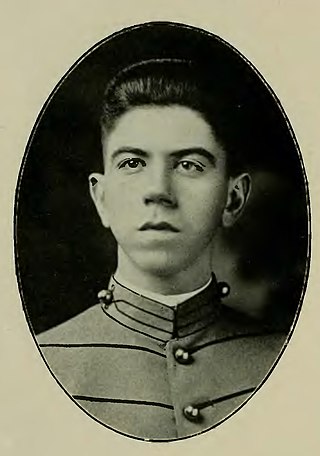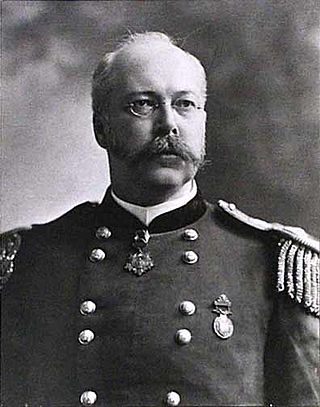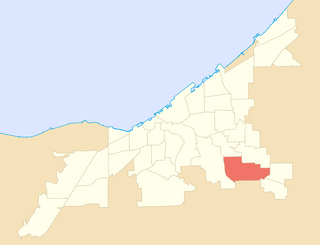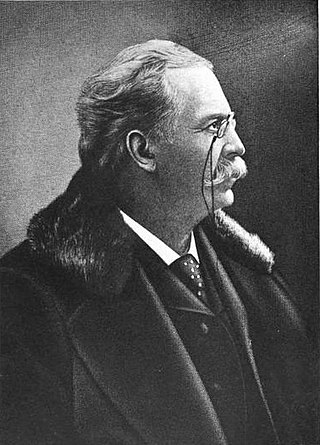Related Research Articles

United States Steel Corporation, more commonly known as U. S. Steel, is an American integrated steel producer headquartered in Pittsburgh, Pennsylvania, with production operations primarily in the United States of America and in Central Europe. The company produces and sells steel products, including flat-rolled and tubular products for customers in industries across automotive, construction, consumer, electrical, industrial equipment, distribution, and energy. Operations also include iron ore and coke production facilities.

Stelco Holdings Inc. is a Canadian steel company based in Hamilton, Ontario. Stelco was founded in 1910 from the amalgamation of several smaller firms. It continued on for almost 100 years, until it filed for bankruptcy in 2007 and was bought by U.S. Steel. In 2016, the company was sold to Bedrock Industries of the United States, which took the company public. The company made its debut on the Toronto Stock Exchange on Nov. 3, 2017.
Nucor Corporation is an American producer of steel and related products based in Charlotte, North Carolina. It is the largest steel producer in the United States, the largest "mini-mill" steelmaker, and the biggest recycler of scrap in North America.

A steel mill or steelworks is an industrial plant for the manufacture of steel. It may be an integrated steel works carrying out all steps of steelmaking from smelting iron ore to rolled product, but may also be a plant where steel semi-finished casting products are made from molten pig iron or from scrap.

Republic Steel is an American steel manufacturer that was once the country's third largest steel producer. It was founded as the Republic Iron and Steel Company in Youngstown, Ohio in 1899. After rising to prominence during the early 20th Century, Republic suffered heavy economic losses and was eventually bought out before re-emerging in the early 2000s as a subsidiary. The company currently manufactures Special Bar Quality (SBQ) steel bars and employs around 2,000 people. It is currently owned by Grupo Simec, based in Guadalajara, Mexico.

The Jones and Laughlin Steel Corporation began as the American Iron Company, founded in 1852 by Bernard Lauth and Benjamin Franklin Jones, a few miles south of Pittsburgh along the Monongahela River. Lauth's interest was bought in 1854 by James Laughlin. The first firm to bear the name of Jones and Laughlin was organized in 1861 and headquartered at Third & Ross in downtown Pittsburgh.

The Youngstown Sheet and Tube Company, based in Youngstown, Ohio, was an American steel manufacturer. Officially, the company was created on November 23, 1900, when Articles of Incorporation of the Youngstown Iron Sheet and Tube Company were filed with the Ohio Secretary of State at Columbus. In 1905 the word "Iron" was dropped from the company name to reflect the company's shift in focus from producing wrought iron products to basic steel products. It acquired the Mark Manufacturing Company in 1923. Youngstown Sheet and Tube remained in business until 1977. A Youngstown resident acquired the name, trademark, and logo in 2014 and opened a small business promoting the economic redevelopment of Youngstown.

Hazelton is a neighborhood in Youngstown, Ohio, located on the city's east side. It is bordered by the cities of Struthers and Campbell. In the early 20th century, the neighborhood was alternately referred to as "the East End".
Cleveland-Cliffs Inc., formerly Cliffs Natural Resources, is a Cleveland, Ohio-based company that specializes in the mining, beneficiation, and pelletizing of iron ore, as well as steelmaking, including stamping and tooling. It is the largest flat-rolled steel producer in North America.

A speed nut, aka sheet metal nut or Tinnerman nut, is a type of locknut with two sheet metal prongs that act as one thread. They are made from spring steel.
PT Krakatau Steel (Persero) Tbk is the largest steel maker in Indonesia, headquartered in Cilegon, Banten. The factory is set on a 280-hectare (700-acre) plot in the western end of Banten and adjacent to the Sunda Strait, and where the Krakatoa volcano and island from which the company takes its name are located.

The economy of Youngstown, Ohio, flourished in the 19th and early 20th centuries, with steel production reaching all-time highs at that time. The steel boom led to an influx of immigrants to the area looking for work, as well as construction of skyscrapers in the area. The city's population peaked at 170,002 in 1930, just at the onset of the Great Depression. World War II also brought a great demand for steel. After World War II, demand for steel dropped off dramatically, and industrial base of Youngstown began to see a decline.

Charles McElroy White was an American steel manufacturing executive. He was a protégé of Tom M. Girdler, and was briefly superintendent of Jones and Laughlin Steel Company in 1929. He followed Girdler to the rapidly growing Republic Steel in 1930, where he was appointed president of the company in 1945. He was promoted to chairman of the board of directors and chief executive officer in 1956. He retired in 1960.

The Illinois Steel Company was an American steel producer with five plants in Illinois and Wisconsin. Founded through a consolidation in 1889, Illinois Steel grew to become the largest steel producer in the United States. In 1898, several other steel and transportation companies were merged into it to form the Federal Steel Company, itself merged into U.S. Steel in 1901.

The US iron and steel industry has paralleled the industry in other countries in technological developments. In the 1800s, the US switched from charcoal to coal in ore smelting, adopted the Bessemer process, and saw the rise of very large integrated steel mills. In the 20th century, the US industry successively adopted the open hearth furnace, then the basic oxygen steelmaking process. Since the American industry peaked in the 1940s and 1950s, the US industry has shifted to small mini-mills and specialty mills, using iron and steel scrap as feedstock, rather than iron ore.

Edmund B. Hayes, also known as General Edmund Hayes, (1849–1923) was an engineer and businessman who built bridges and manufactured autos. He was a pioneer investor in the development of electrical power from Niagara Falls. His company installed the Steel Arch Bridge over the Niagara River and made the first power plant on the Canadian side of the river.
The Cleveland Rolling Mill Company was a rolling steel mill in Cleveland, Ohio. It existed as an independent entity from 1863 to 1899.

Union–Miles Park is a neighborhood on the Southeast side of Cleveland, Ohio, in the United States. The neighborhood draws its name from Union Avenue, and Miles Park in its far southwest corner.

Samuel Augustus Fuller Sr. was an American steel industry executive during the Gilded Age in the United States. A resident of Cleveland, Ohio, he founded the Union Iron Works and Condit-Fuller & Co., which later became the Bourne-Fuller Company. Cyrus S. Eaton combined this company with two others to form the Republic Steel Company which became the third largest steel company in the U.S., trailing only U.S. Steel and Bethlehem Steel in size.

Henry Chisholm was a Scottish American businessman and steel industry executive during the Gilded Age in the United States. A resident of Cleveland, Ohio, he purchased a small, struggling iron foundry which became the Cleveland Rolling Mill, one of the largest steel firms in the nation. He is known as the "father of the Cleveland steel trade".
References
- 1 2 The Western Reserve Historical Society Manuscript Collections Register: Republic Steel Corporation Records, 1895-2001, MS. NO.: 4949 Archived 2010-09-23 at the Wayback Machine
- ↑ "Encyclopedia of Cleveland History: Republic Steel Corp". Ech.case.edu. Retrieved October 30, 2016.
- 1 2 3 “Big Steel Firms Merge Business,” The Cleveland Plain Dealer, Nov 29, 1911, Issue 333, p.1
- 1 2 "Iron and Steel Manufacture". www.angelfire.com. Archived from the original on June 28, 2013. Retrieved 30 October 2016. Quoted material from Directory to the Engineering Works and Industries of Cleveland, Ohio (Cleveland, 1893), pp. 39, 65-66; W. R. Wilbur, History of the Bolt and Nut Industry of America, (Cleveland, 1905), pp. 172-177.
- ↑ “Bourne Fullers Want Upson Nut,” Hartford Courant, Nov 28, 1911. pg.1
- ↑ “Combine of Independent Steel Manufacturer” Pittsburg Press, Nov. 29, 1911
- ↑ Cleveland Plain Dealer, Feb. 20, 1886. p.3
- ↑ James Harrison, A History of the City of Cleveland, pp 370
- ↑ "William T. Radeker, History of Newburgh and the Slavic Village Area". Archived from the original on 2015-03-16. Retrieved 2014-12-12.
- ↑ Cleveland Engineering Society, Visitors' directory to the engineering works and industries of Cleveland, Ohio, (Columbian Edition, July 1893), pp 43
- ↑ “Republic Steel Closes Bourne-Fuller Plant,” The Pittsburgh Press, June 13, 1930
- ↑ The Iron Trade Review, Vol XLVIII, Jan 1 to June 30, 1911, pp 664 (The Penton Publishing Co., Cleveland)
- ↑ Cleveland: Some Features of the Commerce of the City, (Cleveland, 1917), p 46 Archived April 3, 2015, at the Wayback Machine
- ↑ Case Western Reserve University and Western Reserve Historical Society, Encyclopedia of Cleveland History: Republic Steel Corp
- ↑ The Cleveland Plain Dealer, December 21, 1929, pp 14
- ↑ REPUBLIC STEEL CORP. - The Encyclopedia of Cleveland History (site maintained by Case Western University Archived March 3, 2016, at the Wayback Machine
- ↑ Orth, 1910, p. 142
- ↑ Avery, 2012, p. 41
- ↑ Cleveland Plain Dealer, Feb 26, 1900, p 8
- ↑ A joint effort by Case Western Reserve University and the Western Reserve Historical Society, Encyclopedia of Cleveland History: DEMPSEY, JAMES HOWARD
- ↑ The Book of Clevelanders: a biographical dictionary of living men of the city of Cleveland. (Cleveland The Burrows Bros. Company, 1914)